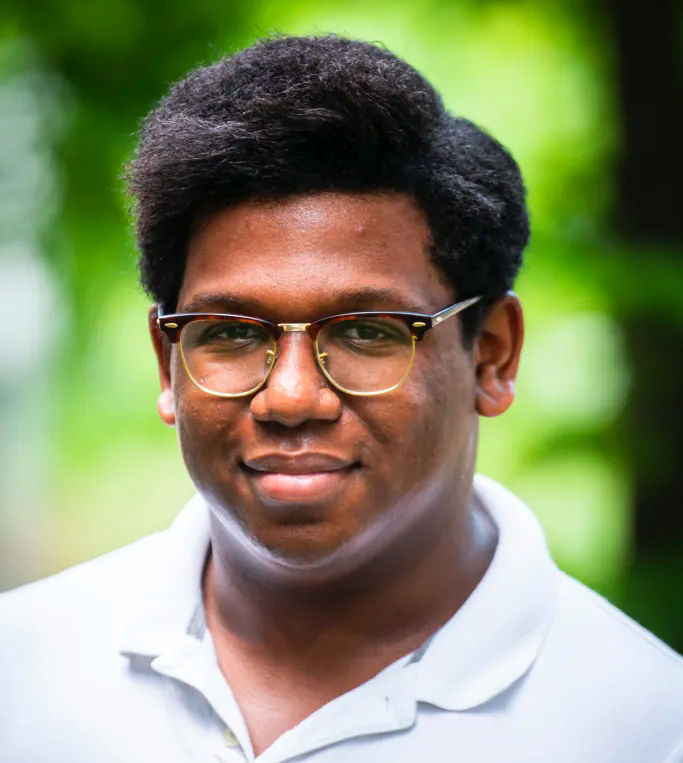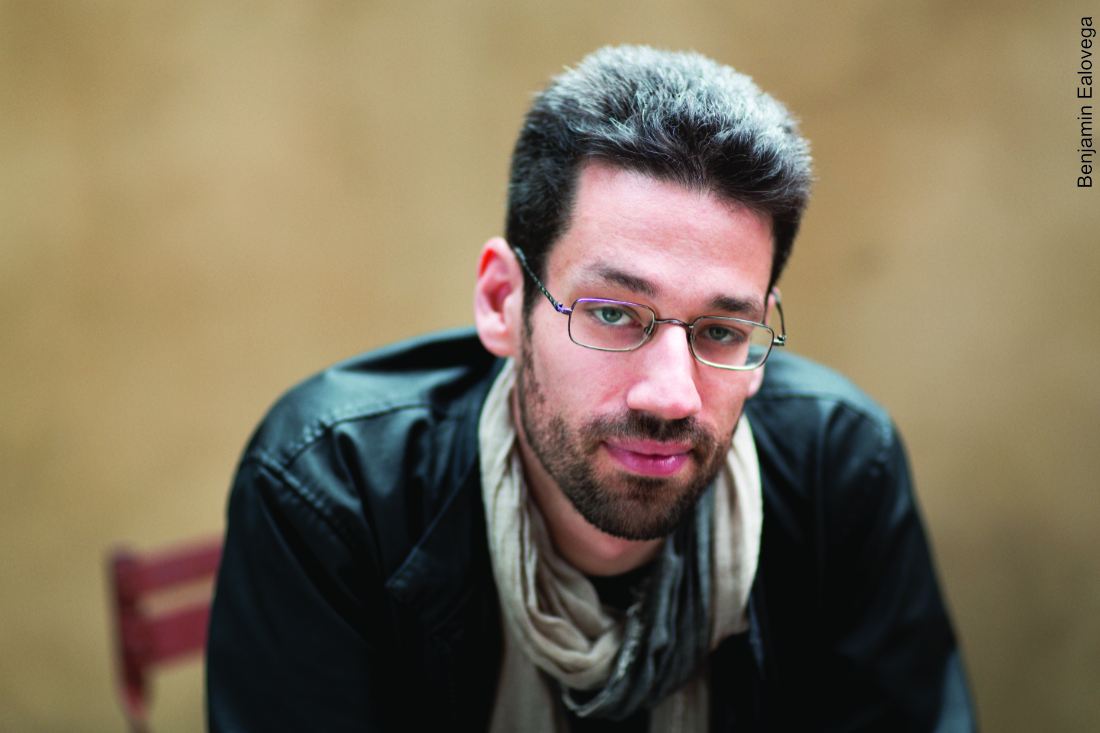“A young American pianist who always displays impeccable taste and a formidable technique” (The New Yorker), Jonathan Biss is a world renowned pianist who channels his deep musical curiosity into performances and projects in the concert hall and beyond. In addition to performing with today’s leading orchestras, Jonathan Biss continues to expand his reputation as a teacher, musical thinker, and one of the great Beethoven interpreters of our time.
In his third performance on our series, Mr. Biss will perform two works by Schubert and a world premiere solo work by Tyson Gholston Davis.
A reception will follow immediately after the concert, with an opportunity to meet the artists. All are encourage to attend!
This concert is generously co-sponsored by the
Dr. Mary Louise Van Winkle Fund
of the Community Foundations of the Hudson Valley.
Franz Schubert (1797–1828)
Impromptu in F minor, D. 935 no. 1
Tyson Gholston Davis (b. 2000)
…Expansions of Light (2023) *
* World Premiere
Franz Schubert (1797–1828)
Sonata in C minor, D. 958
Program subject to change.
Impromptu in F minor, D. 935 No. 1 Franz Schubert (1797–1828)
Schubert’s genius was equally well suited to the epic scale and to the miniature. In piano sonatas and chamber music works of 40 minutes or longer, he takes existing forms and expands them, testing their natural limits and turning digression into a sublime art; in hundreds of lieder, each no more than a few minutes long, he pierces and, in some case, shatters your heart with a single change of harmony or turn of phrase.
The Four Impromptus, D. 935 occupy a middle ground. Already deeply moving when heard individually, they become something greater when experienced in their entirety. Written exactly a year before Schubert’s death at the age of 31 (consider it: 935 pieces of music written by the age of 30), the successive tonalities, forms, and moods of these four freestanding pieces suggest a grand sonata in f minor.
However, freed from the strictures of the word “sonata” and the long shadow it — and Beethoven’s 32 towering examples of the form — casts, Schubert’s imagination becomes even more uninhibited, the results even more wondrous. The first Impromptu is not a sonata form; it has no development. Instead, its expected two themes — the first tragic, the second consoling but still so full of sorrow — are supplemented by an unexpected third. Marked pianissimo appassionato, it is many seemingly contradictory things at once: fervent, mysterious, urgent, halting, haunting. Its effect is transformative: when it is followed by the return of the Impromptu’s opening idea, it has moved away from defiance and towards resignation. Acceptance is still a long way off, but the fight has been revealed to be futile.
…Expansions of Light (2023) * Tyson Gholston Davis (b. 2000)
I. Arietta I
II. Caprice
II. Arietta II
* World Premiere

Composer Tyson Davis (Chris Lee Photography)
…Expansions of Light, for piano (2023) is a triptych in response to Winter Light (1979), a painting by American abstract expressionist Helen Frankenthaler. The composition, like the artwork, is deeply contemplative in nature, providing a meditative and ethereal atmosphere in which the music flows through. While studying the canvas, it became apparent to me that the essence of Winter Light is one of great concern to the expansion and development of a single visual motive. Hues of bright golden bronze in the upper left of the canvas sweep in a downward fashion gradually to the right; this amorphous, draping background is influenced by muted dark shades of brown, green, and orange. In addition to this, deep, yet vibrant blue (of the Yves Klein fashion) impacts the bronze, bleeding into it, mutating itself into various turquoise greens. The metamorphosis of these hues, along with the manner in which they interact with one another, lead this work to explore subtle manipulation of musical gesture and material within my composition.
The name “…Expansions of Light” comes from the ideas previously stated as well my continuous, literal “expansion” of the musical ideas I did in my sketches for the work. The gently flowing lyricism, along with the subtly frozen aspects of Frankenthaler’s canvas are the origin for the movement titles of Arietta I and Arietta II. These movement titles, belonging to the operatic tradition meaning “short aria”, were introduced into instrumental writing by Beethoven in his later piano sonatas (most notably Opus 111). The Caprice provides textural contrast for the composition’s preoccupation with pensive and vocal qualities.
Helen Frankenthaler’s canvases have led me to create several compositions reflecting the nature of her aesthetic concepts. There are currently five “Studies on Frankenthaler” and there are plans for several more in the future. …Expansions of Light (2023), was commissioned by the Terezin Music Foundation for pianist Jonathan Biss and is dedicated to Ara Guzelimian with admiration and gratitude.
Click here to view the image of Helen Frankenthaler’s painting Winter Light on the Christie’s website.
–Tyson Gholston Davis (11.16.2023)
Sonata in C minor, D. 958 Franz Schubert (1797–1828)
When Mozart was still a teenager, he wrote a series of violin concertos which are among the first of his works to have entered the repertoire and remained there. They are age appropriate, assuming one is a genius: impeccably wrought, full of imagination and charm, largely unconcerned with the great questions of life, and wholly untroubled by the specter of death.
When Schubert was eighteen years old, he wrote his first great song, the Erlkönig: a man rides through the night on horseback, holding his child but failing to protect him. Death beckons, in the form of the Erl-king; he is seductive and terrifying. Throughout the song, the pianist is asked to play lightning-fast octaves – the situation is nightmarish, the music close to unplayable. Moments from the end, the relentless motion in the piano part finally stops. Has the danger passed? No. The child has died.
This is Schubert. We forget, because the beauty of his music is so overwhelming, that his nature is morbid. Long before he had reason to suspect that his life would be short, he wrote music that fixates on death, with fascination and terror. When, at the age of just twenty-five, he began to show symptoms of the syphilis that likely killed him, this fixation grew stronger, and found increasingly personal and increasingly devastating expression in his music. This is the Schubert of the Unfinished Symphony, of Die Schöne Müllerin, works that, in their different ways, confront the horror of death, and offer consolation without offering hope.
And when, only a few years later, death was indeed imminent, Schubert reckoned with it in a way no other composer has, before or since. The astonishing final three piano sonatas, dated simply “September 1828” – he died in November – represent three different approaches to facing the inevitable. Perhaps because it was published as the last of the trilogy, the B flat major, with its extreme surface serenity, has most informed our perception of Schubert at the end of his life. He is at peace.
Listen to the Sonata in c minor, D. 958, and you will come to the opposite conclusion. Schubert is in rage, and he is in terror. The work is frightening to play and frightening to listen to; Schubert surely intended it that way. Schubert is staring death in the face and insisting that you do so as well.
One of the signature qualities of Schubert’s late period instrumental music is its digressiveness, its willingness to wander. These works take on epic proportions in part because while Schubert knows the road very well – his sense of structure is unconventional but brilliant – he often veers off it. While the c minor Sonata has one such moment, much of its power comes from how otherwise tightly argued it is. There is a relentless focus to this music which is atypical: perhaps this is why listeners have often found this to be the most Beethovenian of Schubert’s great works. The voice is unmistakably Schubert’s, but the sense of being led, inevitably and even inexorably, down a terrible path, is highly reminiscent of the man who had died just a year earlier, and at whose funeral Schubert had been a pallbearer.
This sense of a remorseless architecture begins instantly: the opening theme rises and rises, reaching upward with terrible insistence, punctuated by silences which only increase the tension. This is a motive but not a melody – a striking and significant choice on the part of a man who wrote hundreds of songs, and whose lyrical gift is rightly venerated. There is plenty of beauty in this sonata, but it is not the starting point, and it will not be the ending point; it is not the point. This opening rise is extreme, as befits the piece: just twelve measures in, we are three octaves higher than where we began, and already at a fever pitch. The terms of the work have been set; the path has been laid.
And again, Schubert shows a commitment to this path that is uncharacteristic. The second theme is in the major mode and, on its face, lyrical, but it is not consoling; it is too unsettled for that. It is surpassingly beautiful but also ambiguous, never reaching a secure resolution, and constantly threatening to turn dark, which it inevitably does. The overall mood of this exposition is consistent, and Schubert’s discursions – his daydreams and his hallucinations – are nowhere to be found.
The development is another story. Midway through, for the first and only time in the sonata, we are suddenly unmoored. The opening of the movement was solidly diatonic, reaching ever upward, moving with total forthrightness; this music is unnervingly chromatic, moving up and then down with slithering uncertainty. It is a ghoulish detour from the movement’s central argument, joined to it only through the terror it evokes.
This pervasive sense of terror makes what follows all the more deeply moving. The sonata’s second movement, an Adagio, puts the Schubertian qualities that had been sidelined in the first movement front and center: the tenderness and consolation in this Adagio’s main theme are almost more than one can bear. This theme, already perfect in and of itself, becomes so much more powerful in context – further evidence of how brilliantly constructed this work is. The theme appears three times, interrupted twice by music with the sense of foreboding that permeates the rest of the sonata: dark, and with the harmonic ground shifting perilously underneath it. Each time the main theme returns, it grows more affecting; each time we grow more aware that it is an oasis whose respite will prove temporary.
And so it is. The third and, particularly, the fourth movements return us to the road we started out on: by the end, it will feel very much like the road to hell. The finale, a dance with death, is among the most grimmest, most unremitting pieces of music ever written. Its primary material’s rhythmic drive is nonstop, its motion relentless; its secondary material, launched by a terrifying sudden shift – a modulation it isn’t – from c minor up to c sharp minor, is, if possible, even more obsessively driven. The central episode, the movement’s only music in the major mode, while beautiful in an unearthly way, is not ultimately less frightening – this is the Erl-King, leading us with a smile to our death.
And death does come. The sonata began with a furious rise to the top of the keyboard; it ends with a plunge all the way to the bottom. It is the culmination of an altogether harrowing work, one which gives magnificent expression to the darkest corners of Schubert’s psyche.
JONATHAN BISS, piano
Jonathan Biss is a world renowned pianist who channels his deep musical curiosity into performances and projects in the concert hall and beyond. In addition to performing with today’s leading orchestras, he continues to expand his reputation as a teacher, musical thinker, and one of the great Beethoven interpreters of our time. He is Co-Artistic Director alongside Mitsuko Uchida at the Marlboro Music Festival, where he has spent fifteen summers. He also recently led a massive open online course (MOOC) via Coursera, reaching an international audience of over 150,000. Biss writes extensively on his repertoire and has authored four audio- and e-books, including UNQUIET: My Life with Beethoven (2020), the first Audible Original by a classical musician and one of Audible’s top audiobooks of 2020.
During the 2022-23 season, Biss gives solo recitals in cities including Cologne, New York, and Philadelphia, performing works by Berg, Schumann, and Schubert; he performs Beethoven trios with Midori and cellist Antoine Lederlin in Cologne, Engardin, Hamburg, London, and Tokyo; and appears as soloist with the Atlanta Symphony, Budapest Symphony, and the Rochester Philharmonic, as well as with the New York String Orchestra at Carnegie Hall playing Beethoven’s Piano Concerto No. 5 (“Emperor”).
Throughout his career, Biss has advocated for new music. This year he continues his ongoing Beethoven/5 commissioning project, in association with the Saint Paul Chamber Orchestra, that pairs each Beethoven concerto with a new concerto composed in response. This season, he performs Beethoven’s Piano Concerto No. 5 paired with a piano concerto inspired by that work: Brett Dean’s Gneixendorfer Musik– Eine Winterreise in its U.S. premiere with the SPCO, as well as both concertos with the Melbourne Symphony. Biss has performed the Dean and fifth Beethoven concertos together in concerts with the Dresden Philharmonic, NFM Wrocław Philharmonic, and Swedish Radio Symphony Orchestra. He has also performed the Dean concerto separately with the BBC Symphony Orchestra. Among the earlier Beethoven/5 commissions are Caroline Shaw’s Watermark, inspired by Beethoven’s Piano Concerto No. 3; Timo Andres’s The Blind Banister (a finalist for the Pulitzer Prize in Music) inspired by the second piano concerto; Sally Beamish’s City Stanzas paired with Beethoven’s first piano concerto, and Salvatore Sciarrino’s Il Sogno di Stradella paired with the fourth. Prior to the Beethoven/5, project Biss commissioned Lunaire Variations by David Ludwig, Interlude II by Leon Kirchner, Wonderer by Lewis Spratlan, and Three Pieces for Piano and a concerto by Bernard Rands, which he premiered with the Boston Symphony Orchestra. He has also premiered a piano quintet by William Bolcom.
In 2020, coinciding with the 250th anniversary of Beethoven’s birth, Biss concluded over a decade-long immersion in the composer’s music, which included concert series, recordings, writings, lectures, and commissions of Beethov*en-inspired works. Through the course of his Beethoven study, Biss recorded the composer’s complete piano sonatas, and offered insights to all 32 landmark works via his free, online Coursera lecture series Exploring Beethoven’s Piano Sonatas. His final Coursera installments appeared in January 2020, and Orchid Classics released the nine-disc sonata cycle box set the following March. That same month, in a virtual recital presented by the 92nd Street Y, Biss performed Beethoven’s last three piano sonatas for an online audience of more than 280,000 people, one of the first major at-home concerts of the early pandemic era. This was followed by a daily video series of selections from the Beethoven sonatas presented via Biss’ Facebook page over the course of several weeks.
Biss’s endeavors represent his complete approach to music-making, and desire to imbue audiences with his own passion for music. Previous projects included an exploration of composers’ “Late Style” in various concert programs at Carnegie Hall, the Barbican Centre, Philadelphia Chamber Music Society, and San Francisco Performances. He also gave master classes at Carnegie Hall and published the Kindle Single Coda on the topic. His previous Kindle Singles also include Beethoven’s Shadow, and A Pianist Under the Influence, the latter of which coincided with his project Schumann: Under the Influence,a 30-concert exploration of the composer’s role in musical history, and recording of Schumann and Dvořák piano quintets with the Elias String Quartet.
Biss represents the third generation in a family of professional musicians including his grandmother Raya Garbousova, one of the first famous female cellists (for whom Samuel Barber composed his Cello Concerto), and his parents, violinist Miriam Fried and violist/violinist Paul Biss. Growing up surrounded by music, Biss began his piano studies at age six, with his first musical collaborations alongside his mother and father. He studied with Evelyne Brancart at Indiana University and Leon Fleisher at the Curtis Institute of Music. He has since appeared with major orchestras internationally, including in the U.S. with the Los Angeles and New York Philharmonics; the Boston, Chicago, and San Francisco Symphonies; and the Cleveland and Philadelphia Orchestras. In Europe, he has appeared with the BBC Symphony, Royal Concertgebouw Orchestra, London Philharmonic, Staatskapelle Berlin, Staatskapelle Dresden, and Gewandhausorchester Leipzig, among many other ensembles.
Biss has been recognized with numerous honors, including the Leonard Bernstein Award presented at the 2005 Schleswig-Holstein Festival, Wolf Trap’s Shouse Debut Artist Award, the Andrew Wolf Memorial Chamber Music Award, Lincoln Center’s Martin E. Segal Award, an Avery Fisher Career Grant, the 2003 Borletti-Buitoni Trust Award, and a 2002 Gilmore Young Artist Award. His albums for EMI won the Diapason d’Or de l’Année and Edison awards. He was an artist-in-residence on American Public Media’s Performance Today and was the first American chosen to participate in the BBC’s New Generation Artist program. He is also on the piano faculty of the New England Conservatory.




